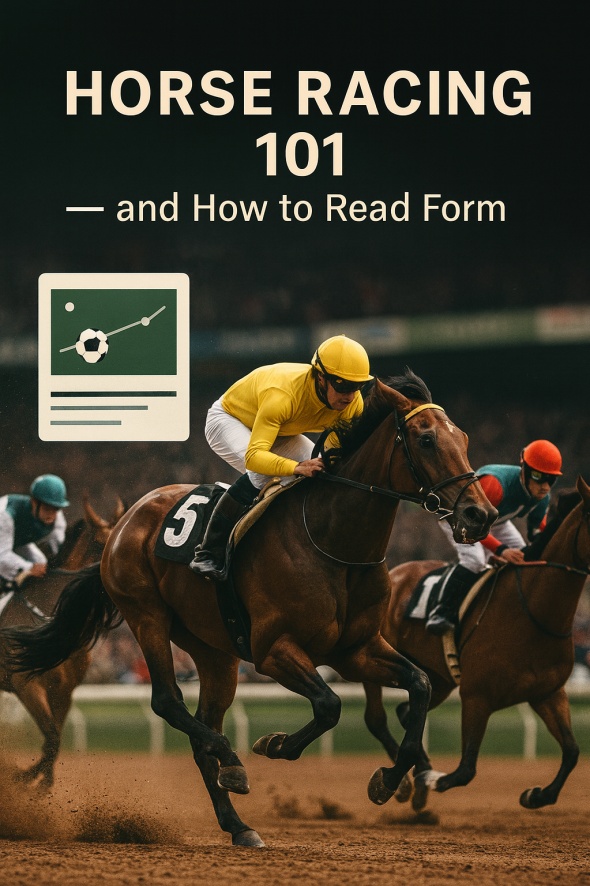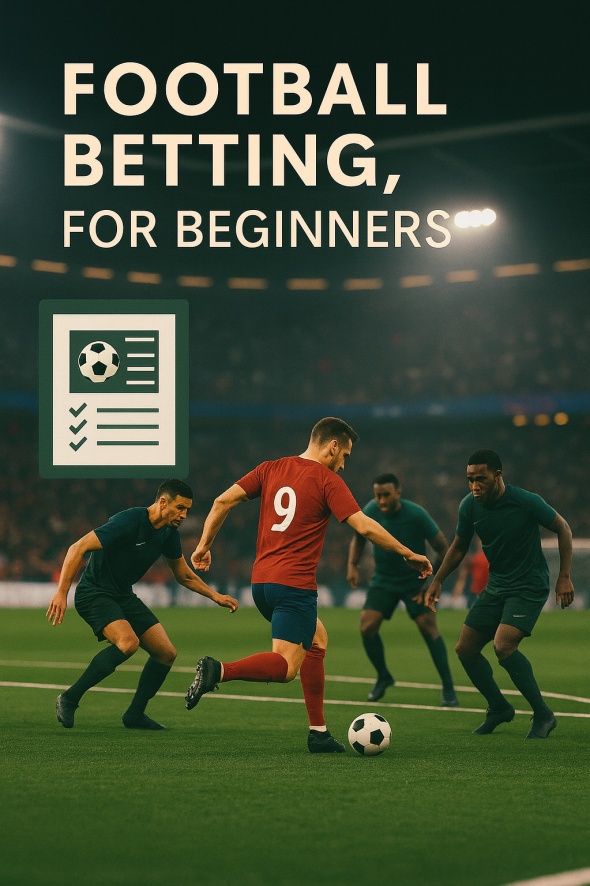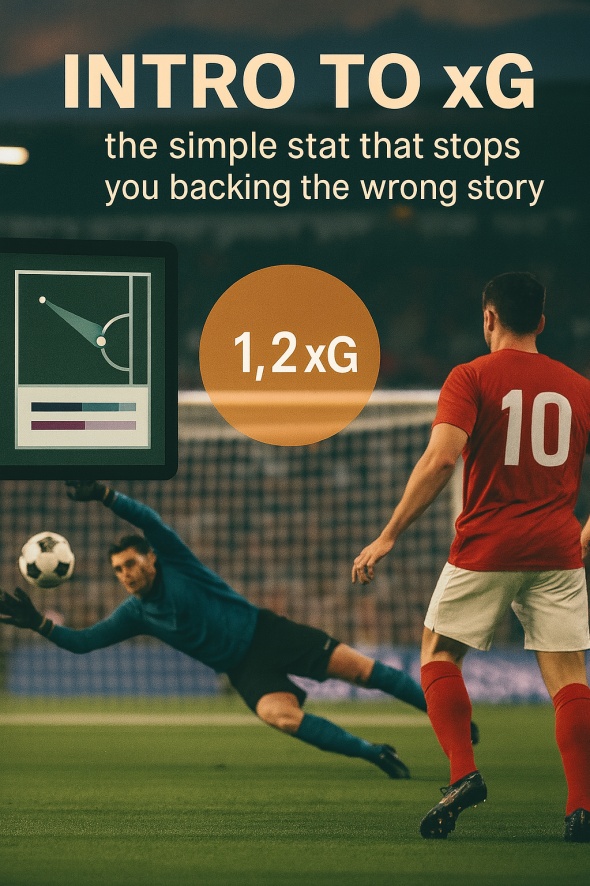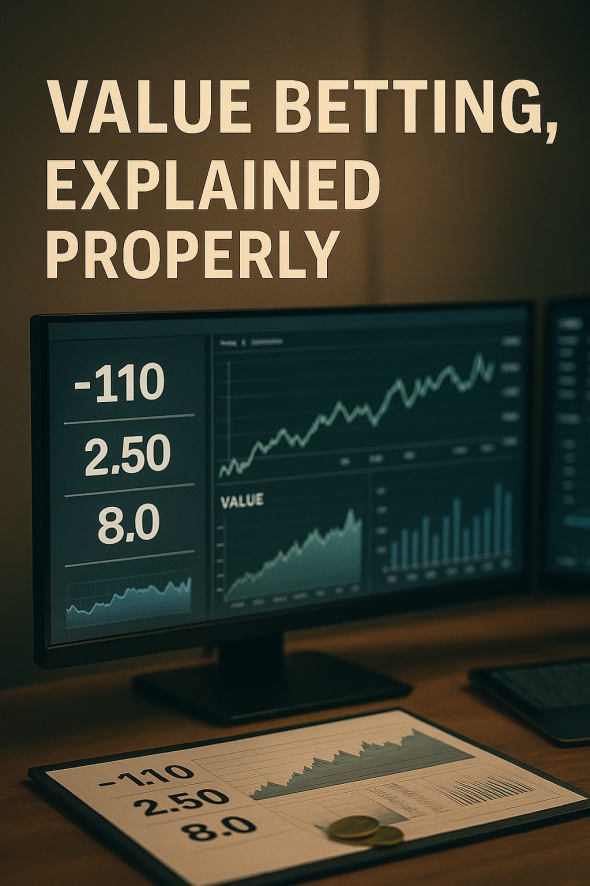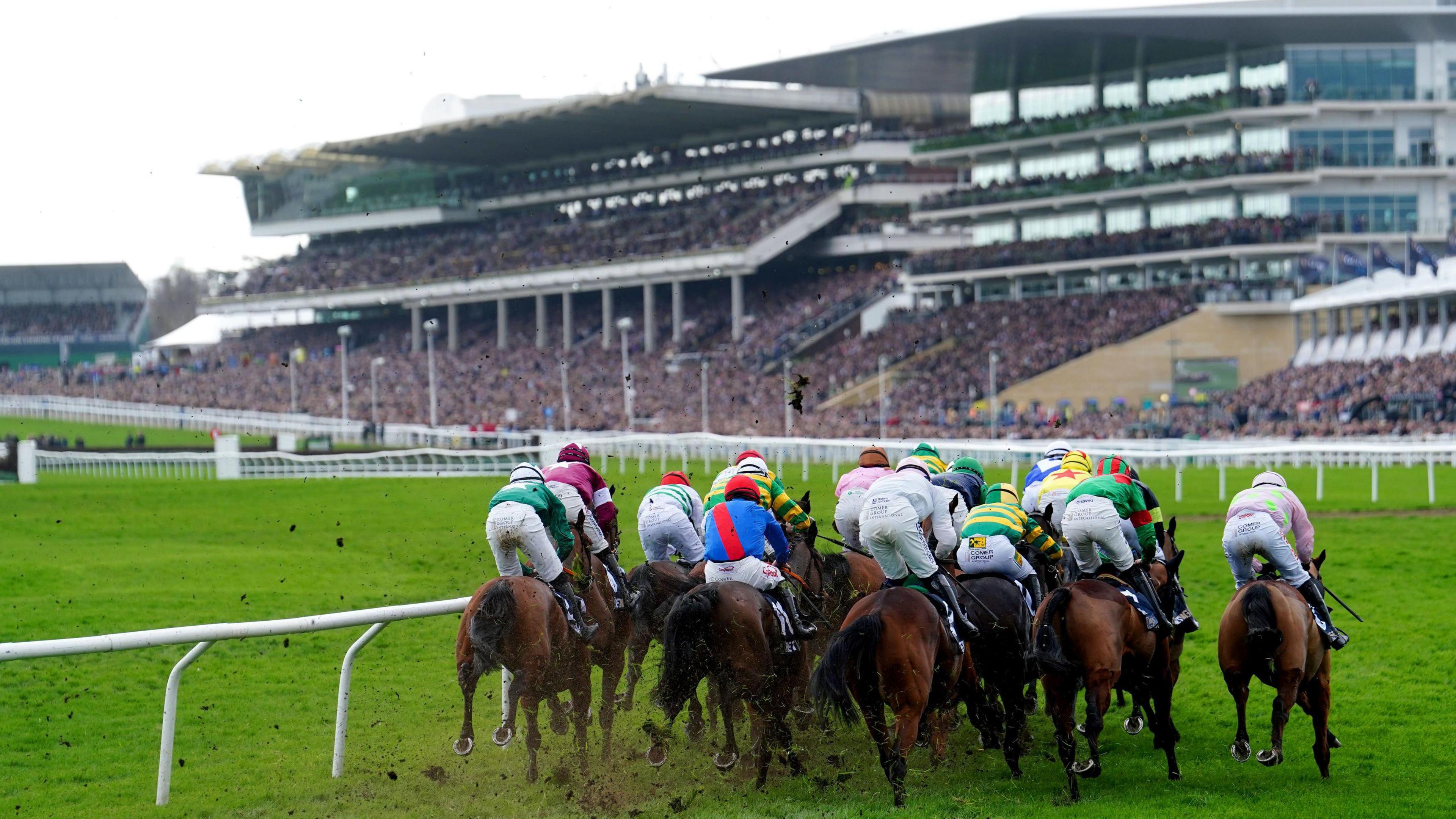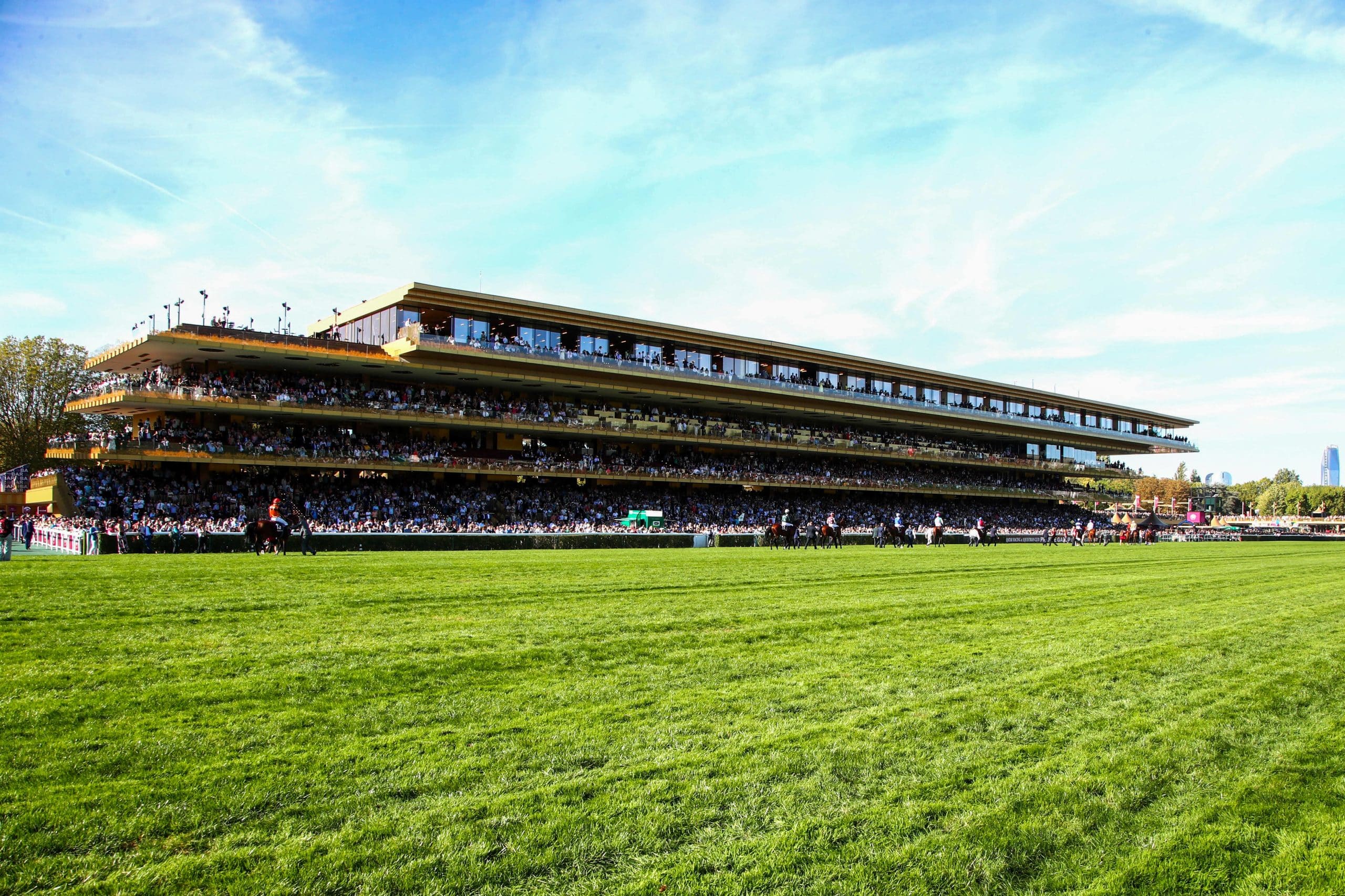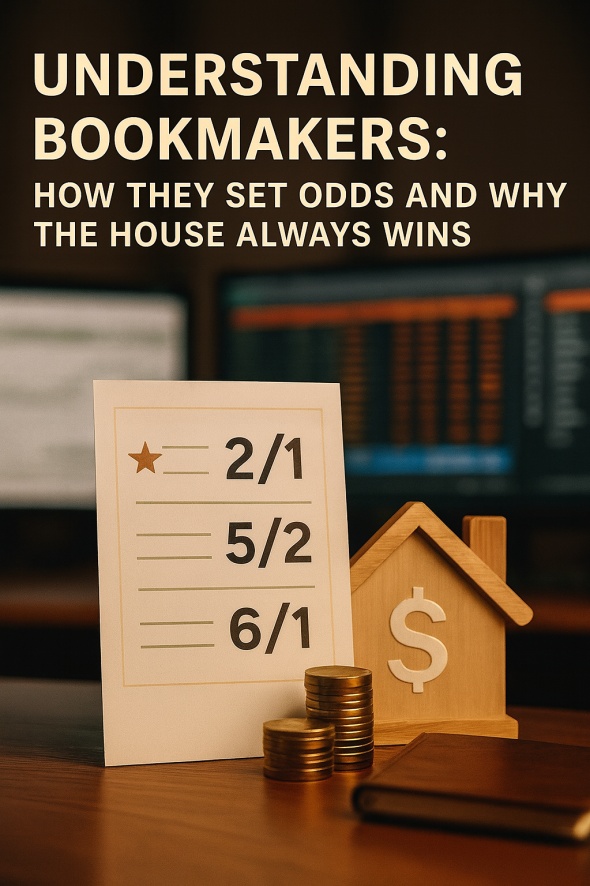
Understanding Bookmakers: How They Set Odds and Why the House Always Wins
Bookmakers aren’t predicting the future better than everyone else. They’re selling prices with a built-in edge and moving those prices as money and news arrive. Once you see how that edge works, betting stops being guesswork and starts being about price.
Bookmakers don’t need to pick winners; they just need to sell prices with a built-in advantage.
Odds in plain English
Odds are just another way to write a chance. With decimal odds you can read it straight off:
- 2.00 → 50% (about one in two)
- 3.00 → 33% (about one in three)
- 4.00 → 25%
Quick rule: chance = 1 ÷ odds. If a team is 2.50, the price is saying roughly 40%.
The house edge (overround)
In a perfectly fair market the chances for all outcomes would add to 100%. Bookmakers add a margin (overround) so the total comes to more than 100%. That extra bit is their cushion.
A quick feel for it: a two-outcome market often sits around 1.91 / 1.91 instead of 2.00 / 2.00.
1.91 implies ~52.4% each. 52.4 + 52.4 = 104.8%.
That ~4.8% above 100% is the overround—the built-in cost you’re betting into.
You don’t need heavy maths every time. Just know the edge exists on every market, and your job is to buy good prices despite it.
Why prices move
- Money flow & liability. If too much cash lands on one side, the price moves to balance risk. That doesn’t mean the true chance changed—just the exposure.
- Information. Line-ups, injuries, weather, tactical shifts, and respected professional money.
- Shading. Books often make favourites, home sides and “overs” a touch shorter because casual money clusters there; unpopular sides can be a touch bigger. It’s business, not bias.
Why the house tends to win
Because it owns the structure:
- Overround on every market compounds across thousands of bets.
- Limits and timing: tighter early (when numbers are softer), bigger later (when numbers are sharper).
- Speed and tooling: traders react to real information faster than most people can.
- Venue: traditional books embed margin; exchanges charge commission but often sit closer to “fair”, and books watch them.
Across a season, that structure is enough—unless you operate with a method.
The beginner method (simple and repeatable)
- Translate prices into chances. If you can’t “see” the chance, you can’t judge the bet.
- Strip the margin before you judge. Add the implied chances; anything above 100% is the overround. Scale back to 100% to see the market’s margin-free picture (often called the no-vig view).
- Only bet when your view beats the market’s. If you believe an outcome happens more often than the margin-free chance—and by a sensible buffer—that’s value. No value, no bet.
- Buy the best available price. 2.05 instead of 2.00 looks tiny; repeated hundreds of times it isn’t. Price shopping is free edge you control.
- Pick your moment. Early prices can be softer (but with smaller limits). Late prices are tighter but can overreact to headlines—sometimes creating value the other way. Build a simple timing routine for your main leagues.
- Stake with discipline. Use a steady unit (often 1–2% of your betting bank). Consistency turns small edges into meaningful results.
- Keep a quick record. Note the event, market, odds taken, stake, and the final price before kick-off. Over time you’ll see whether you consistently buy good numbers, even when short-term results wobble.
Example:
Match odds (decimal): 2.10 / 3.50 / 3.60.
Those prices roughly say: 48% / 29% / 28%. Add them up and you’re a bit over 100%—that’s the margin.
If your view is the home side actually wins 52% of the time, then any price better than 1.92 (because 1 ÷ 0.52 ≈ 1.92) is potentially value. If the market offers 2.10, it’s a candidate. If it’s 1.95, the edge has probably gone—pass.
Bottom line
Bookmakers win by design: margin, money management, and speed. Beating that isn’t about a crystal ball; it’s about a simple, repeatable process—read chance from price, respect the margin, only take value, shop and time entries, stake sensibly, and track your prices over a proper sample. This article is the starter. The full, step-by-step method is what we teach inside our training.
Download Turn the Tide: 8 Fast Fixes That Shift the Odds in Your Favour — quick, practical tweaks you can use today.
Sign up now for Edge Verge Professional Training (with Beginner and VIP options available) to learn the complete, in-depth system behind everything in this article
Discover More about EdgeVerge
Join EdgeVerge today and experience the difference that professional sports analysis and insights can offer, or download the Turn the Tide 10 Step Guide to learn more.
